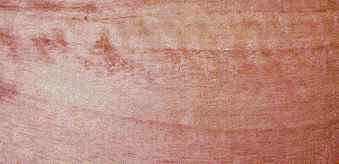
Pili (Canarium luzonicum)
Family: Burseraceae
Common names: Antang, Anteng, Bakan, Bakoog, Belis, Bulau, Kedondong, Pagsahingin, Pilauai, Pilaui, Pili, Piling liitan, Sahing
Distributed in: Philippines (Oceania and S.E. Asia)
Distribution overview: This species occurs in primary forest at low to medium altitudes in the Philippines.
Common uses: Bent Parts, Boxes and crates, Building construction, Building materials, Chairs, Chests, Construction, Core Stock, Desks, Dining-room furniture, Drawer sides, Furniture , Furniture components, Furniture squares or stock, Interior construction, Joinery, Kitchen cabinets, Light construction, Moldings, Office furniture, Packing cases, Plain veneer, Plywood, Rustic furniture, Stools, Stringers, Structural plywood, Utility furniture, Utility plywood, Veneer
Environment profile: Extinct, Endangered, Vulnerable, or Rare within its range
Tree size: Trunk diameter is 300-350 cm
Colors: the heart isRed, Reddish brownand the sapwoodNot clearly differentiated from the heartwood., White.The grain isStraight to interlocked, the textureMediumand the lusterMedium
Natural durability: Susceptible to insect attack
Odor: No specific smell or taste
Silica Content: Likely to have significant impact on machining
Ease of Drying: Dries well with little degrade
Blunting Effect:
Blunting effect is said to be correlated with the silica content
Cutting Resistance: Cutting resistance is variable
Dependent upon the silica content of the wood
Planing: Variable machining properties
Resistance to Impregnation: Sapwood is permeable
Response to hand tools: Easy to Work
- Numerical data Metric
- Numerical data English
- Strength properties
- References
 |
 |
 |
 |
| Item |
Green |
Dry |
Metric |
| Specific Gravity |
0,39 |
|
|
| Density |
|
512 |
kg/m3 |
| Bending Strength |
461 |
847 |
kg/cm2 |
| Crushing Strength |
42 |
92 |
kg/cm2 |
| Hardness |
|
358 |
kg |
| Impact Strength |
|
|
cm |
| Shearing Strength |
|
133 |
kg/cm2 |
| Stiffness |
65 |
79 |
1000 kg/cm2 |
| Tangential Shrinkage |
|
|
% |
| Radial Shrinkage |
|
|
% |
| Weight |
|
|
kg/m3 |
| Maximum Load |
|
|
cm-kg/cm3 |
| Toughness |
|
264 |
cm-kg |
| Static Bending |
286 |
539 |
kg/cm2 |
|
 |  |  |  | | Item | Green | Dry | English | | Bending Strength | 6566 | 12054 | psi | | Crushing Strength | 608 | 1310 | psi | | Density | | 32 | lbs/ft3 | | Hardness | | 791 | lbs | | Maximum Crushing Strength | 2999 | 5811 | psi | | Shearing Strength | | 1895 | psi | | Static Bending | 4070 | 7667 | psi | | Stiffness | 927 | 1127 | 1000 psi | | Toughness | | 230 | inch-lbs | | Specific Gravity | 0.39 | | | | Weight | 31 | 25. | lbs/ft3 | |
Weight = moderate
Resists denting and marring
Hardness = medium
Compression strength (parallel to grain) = medium
Bending strength (MOR) = high
Bending strength in the air-dry condition (about 12 percent moisture content) is high - comparable to Teak. It has medium compression strength parallel to grain, comparing favorably to Mahogany. Hardness is rated as medium. It resists denting and marring about as well as white oak or birch. The weight is moderate. The wood is high in density.
Chudnoff, M.,1984,Tropical Timbers of the World,U.S.A. Department of Agriculture, Forest Service, Forest Products,Laboratory, Madison.Lauricio, F. M., Bellosillo, S. B., The Mechanical and Related Properties of Philippine Woods, The Lumberman, 12(5):A-H.Schneider, E.E. 1916. Commercial Woods of the Philippines: Their Preparation and Uses. Bulletin No. 14. Department of the Interior, Bureau of Forestry, Manila, Philippines.WCMC. 1992. Conservation Status Listing - Trees and Timbers of the World. World Conservation Monitoring Center-Plants Programme, Cambridge, CB3 ODL, United Kingdom.
|








